Cheers to the New Year! Read Responsibly
Good libations are this season’s tradition, whether you’re raising your glass to the new year or trying to disappear into one during a particularly tense family dinner. We’ve put together a list of books that’ll give you some drinking direction. Whether you’re acting as the family sommelier, mixing drinks for a party with friends, or preparing breakfast smoothies before opening presents, there should be something in these books to make your holidays brighter.
Seasonal drinks (it would be ill-spirited not to try them)
Winter Cocktails
Mulled Ciders, Hot Toddies, Punches, Pitchers, and Cocktail Party Snacks
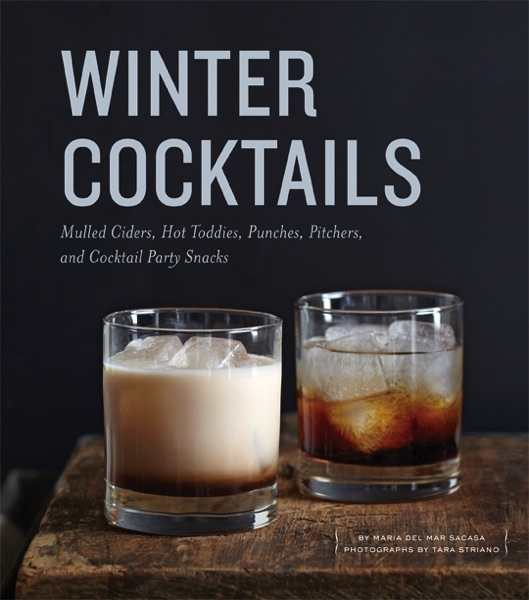
Maria del Mar Sacasa
Tara Striano
Quirk Books
Hardcover $22.95 (160pp)
978-1-59474-641-3
Buy: Amazon
What better way to warm up than from the inside out. Fifty inviting, beautifully photographed drink recipes—just muddle then cuddle the winter blues away.
MATT SUTHERLAND (November 30, 2013)
Can’t get enough of that juniper scent?
The Book of Gin
A Spirited History from Alchemists’ Stills and Colonial Outposts
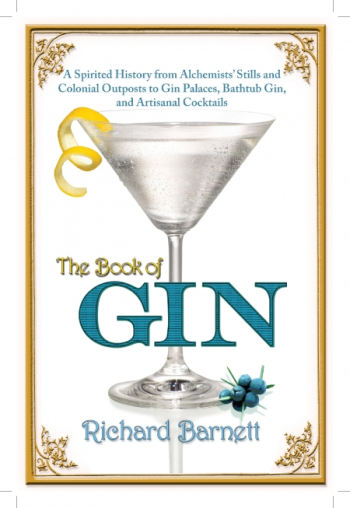
Richard Barnett
Grove Press
Hardcover $24.00 (304pp)
978-0-8021-2043-4
Buy: Local Bookstore (Bookshop), Amazon
Tracing gin’s history back to ancient times, Richard Barnett launches this intoxicating, astringent tale with an exploration of the age-old culinary and religious associations of its primary flavoring, juniper. Burned during purification rites and added to meats as a central feature of Germanic cuisines, this coniferous plant featured prominently in alchemic and medicinal processes. Once juniper met alcohol, the resulting clear liquid became both curative medicine and recreational pastime. However, it was only with Britain’s and the Netherlands’ rise to international prominence that gin truly acquired its real and lasting global significance. Trade routes and colonialism eventually spread gin to every corner of the earth—where it has woven itself into the fabric of widely varying cultures.
Supposedly popularized in England with the arrival of the Dutch King William of Orange in England, gin was dubbed “mother’s ruin” during the Industrial Revolution when it was the only affordable panacea against the hopeless misery of English working men and women. Gin became entrenched as a synonym for debauchery and dissolution. The tipple’s popularity was blamed for everything from infanticide to tuberculosis. The popular spirit moved dramatically upmarket when, combined with quinine-laced tonic water, it was deployed to combat widespread malarial outbreaks in the British Raj. Back in “good old Blighty,” returning colonials incorporated the gin and tonic into the daily routine of the ruling—and the aspiring—classes, where it has remained ensconced to this day.
As Barnett puts it, gin has largely been associated with the “virtues and vices of urban life.” The racy and forbidden connotations of “bathtub gin” lingered long after the demise of the Prohibition speakeasy. Later, the postwar cult of the dry martini enshrined gin’s status as the ultimate badge of chic sophistication. More recent times have seen the rise of micro-distilleries as part of a growing gin connoisseurship that values handcrafted individuality over corporate branding and mass production.
With an instinctual storyteller’s sense for fascinating detail and an encyclopedic knowledge of arcane social history, Barnett deftly covers all these many chapters of gin’s complex history, drawing us into the worlds of commoners and kings, whores and debutantes, all of whom supped of this intoxicating elixir. The text covers vast swaths of knowledge, incorporating the seemingly diverse and unrelated fields of gender relations, manufacturing processes, high finance, and taxation shenanigans, as well as the evolution of food standards and colonialism. Like its subject, this volume goes down easy. Yet after reading it, this reviewer felt surprisingly clear headed! Definitely a welcome addition to every civilized library and liquor cabinet.
SEAMUS MULLARKEY (December 3, 2012)
Make wine for next year!
Wild Wines
Creating Organic Wines From Nature’s Garden
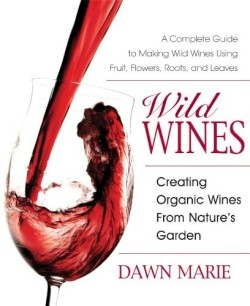
Dawn Marie
Vicki Renoux, illustrator
Square One
Unknown $18.95 (210pp)
978-0-7570-0292-2
Buy: Local Bookstore (Bookshop), Amazon
Wine, in its many flavors and forms, is one of the world’s most popular beverages. But its main ingredient, grapes, is cultivated using at least seventeen different insecticides, pesticides, and fumigants—many of which contain carcinogens. A rather disturbing statistic, according to Californians for Pesticide Reform, is that “grape production accounts for a third of all pesticide-associated illness in California, the state where 90 percent of domestic wines are produced.”
Wild Wines offers an alternative to commercial wines, and with the growing demand for local organic food sources, it should be a welcome addition to any do-it-yourself library.
Divided into two parts, the first section begins with a condensed Wine 101 and explains types, serving etiquette, tasting, and ingredients. Readers will learn nonpoisonous plant identification and selection, along with storage and preservation techniques. A wine making supply list is also included. Specific techniques on plant essence extraction, proper bottling, aging, and troubleshooting complete this section.
Part two, a cornucopia of recipes, is arranged by ingredient types (fruits, roots, flowers, leaves, and miscellaneous items). While apple, strawberry, and ginger wines are common, more unusual recipes include Japanese knotweed, Prune, Cattail, Madrone Bark, Arrowleaf Balsamroot, and wild flowers like violet, rose, and wisteria.
Author Dawn Marie is a Chicago native and naturalist who currently resides in the Pacific Northwest, where she forages for wild plants to use in her food and beverage recipes. Illustrator Vicki Renoux has a background in natural foods and currently lives in Florida.
This book contains A-Z details about wild organic wine making for the novice or experienced wine maker. Black and white diagrams of supplies and plant illustrations are sprinkled throughout the text. Pull-out quotes highlight tidbits of interest like, “What’s behind those pesky red-wine headaches?” and a blurb on biodynamic gardening, a method of farming that works with the rhythms of the Earth. Charts show how to read wine labels, wild plant growth seasons, yeast and sugar characteristics, and an organic winery evaluation chart. The back of the book contains a glossary, supplier resources, an organic vineyards list, and a suggested readings list.
Wild Wines is a comprehensive work on making organic wines using alternative ingredients. Readers will find this resourceful “grape” alternative worthy of a toast.
ANGELA BLACK (December 11, 2007)
For those of us whose holidays inevitably include Asian cuisine
Wine with Asian Food
New Frontiers in Taste
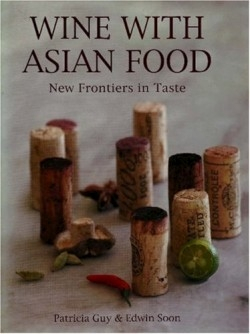
Edwin Soon
Patricia Guy
Tide-mark Press
Unknown $24.95 (174pp)
978-1-59490-114-0
Buy: Amazon
For sixteen consecutive years, wine sales in the United States have grown at nearly a five percent rate. Indeed, Americans have been on such a bender as to leapfrog both the Italians and the French into becoming the world’s number one wine consuming country in 2008. It’s no surprise then to see a commensurate rise in the publishing of wine books, including a more recent rise in food and wine pairing books. Of real interest to serious epicureans is the handful of authors attempting to identify the appropriate wine to serve with the food and cooking of Japan, Southeast Asia, and India. Dishes from these regions frequently combine layers of strong flavors. Furthermore, Asian chefs love to play with textures in a chewy—meets—crunchy game of contrasts. Wine, one must remember, can also be creamy, chewy, tannic, and bubbly. Pairing the two is not for the fainthearted.
Wine with Asian Food, the best project to date, opens with a thorough examination of the basic flavors inherent to Asian cooking: salty, sour, sweet, bitter, and umami, a newly recognized rich and meaty-type flavor known to Japanese chefs for more than a century. Next, authors Patricia Guy and Edwin Soon offer a template categorizing scores of typical Asian dishes based on their predominant flavor. From there we learn about the seven broad categories of wine styles so that readers can simply match a food category with a wine category. Don’t be put off. Their writing is immensely clear and the effort worthwhile because very few things are more satisfying than a favorable dinner table match with the added bonus of a wine glow.
The book then moves on to offer fifty recipes separated into the aforementioned five food categories ranging from Fresh & Herbal Flavors to Fiery & Sweet Flavors. Each of the recipes is touted as being as “classic” and “widely available in restaurants yet easily prepared at home.” Full-page color photos are placed opposite, and each dish is referenced geographically and often historically. The all-important wine recommendations will appeal to fans of Old World (Europe) and New World (North and South America, Australia, New Zealand, South Africa) vintages, as well as oddball pairings for the adventuresome.
Based on the quality of this effort and the endless number of Asian dishes to research, we recommend that Tide-mark sign Guy and Soon to a series of similar titles.
MATT SUTHERLAND (February 15, 2008)
If you’re a bit of a rebel (or are missing summer desperately)
Summer Cocktails
Margaritas, Mint Juleps, Punches, Party Snacks, and More
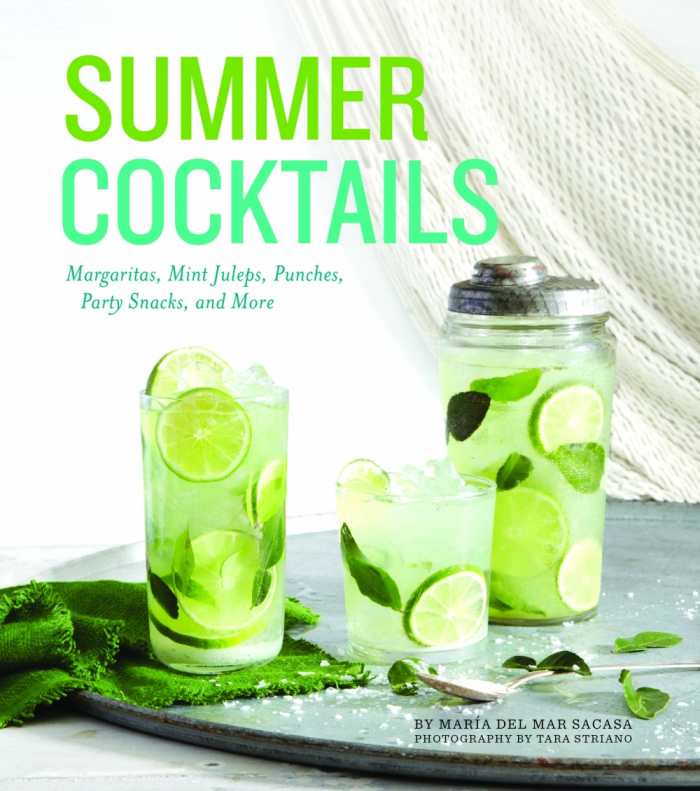
Maria del Mar Sacasa
Quirk Books
Hardcover $22.95 (158pp)
978-1-59474-785-4
Buy: Amazon
Leave it to Quirk Books to open a cocktail book with a recipe for preparing bacon. The playfulness continues throughout Summer Cocktails with scores of tempting drink recipes, remedies in the case of overindulgence (Antidotes), snacks to accompany potent potables, and a detailed section about making homemade syrups, infused liquors, and sour mixes.
The main focus, of course, is the cocktail recipes. Del Mar Sacasa offers a bounty of classics, lightened up for warm weather imbibing, as well as some “novel potions that flirt with the old guard,” like the Flavor Flav, a martini frisked up with shiso and Shishito peppers; and the Honey Badger, a sassy concoction of bourbon, chile-spiced honey syrup, lemon juice, and sparkling wine. Many cocktails reflect the author’s Latin American heritage and feature such zesty flavors as tamarind, cilantro, mango, and jalapeño.
Airy photos of rainbow-colored drinks in icy, sweating glasses and fun snacks for entertaining make this an alluring package, whether you are planning to be the mixologist at your next poolside party or just want to laze about in a hammock staying hydrated in style.
RACHEL JAGARESKI (May 27, 2015)
Should you just wish to dream of wine country
The Monterey & Big Sur Book With the Gold Coast Wine Country

Buz Bezore
Christina Waters
Berkshire House Publishers
Unknown (300pp)
978-0-936399-51-5
Buy: Amazon
The Monterey & Big Sur Book with the Gold Coast Wine Country is the most comprehensive and well-designed travel guide specific to this beautiful, and ideal-climated Northern California/Central Coast region. Every aspect of scenery, from redwood forests and mountains to the oceans, architecture, shopping, vineyards, winetasting, surfing, shopping, dining and dancing are covered succinctly and with a mini-review for different eclectic tastes.
Even cultures of the different areas are reviewed to give the reader a pre-feel of their travel experience. All reviews breakdown, in one paragraph, an overall review along with cost (including which credit cards are accepted), owners, address, phone number, hours, children-friendly, handicap-friendly access, and if smoking is allowed.
The authors are life-long locals who impose their delightful love and knowledge to spark your varied interests. If Northern California/Central Coast is an area you want to spend many hours exploring, this book is a must pre-read before you travel.
NANCY TAMBURELLO (December 16, 1998)
A little something for the teetotalers, too
The Juice Lady’s Guide to Juicing for Health
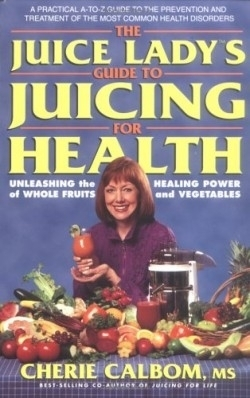
Cherie Calbom
Avery Publishing Group
Unknown $13.95 (400pp)
978-0-89529-999-4
Buy: Amazon
With a Master’s degree in nutrition, six books and many magazine and newspaper articles to her credit, Calbom’s is a competent voice for juicing for health. Calbom begins with the story of her personal odyssey to health through juicing. She answers many questions a reader might have with great detail—from what juicer to buy to what juice combinations are best for which ailments.
Working from allergies through chronic fatigue, eczema and high blood pressure to varicose veins, Calbom has gathered information on health supportive alternatives to drugs. In the section entitled Fibrocystic Breast Disease, Calbom provides a description of the ailment, what causes it, dietary and nutrient recommendations and suggestions for herbal remedies and juice ingredients. Calbom’s nine recipes for juices that help fibrocystic breast disease like Watermelon Refresher, Sweet Calcium Cocktail, Magnesium Special and Beautiful Bone Solution are easy to prepare with familiar ingredients.
Juicing for health began in the sixties and seventies on the far out edges of nutrition and health with such books as Paavo Airola’s How to Keep Slim, Healthy and Young with Juice Fasting. From the abundant list of presently available books on it, juicing along with herbs and a healthful diet seems to be moving closer to center among the health-minded.
Calbom leads and inspires the reader into an easy approach to better nutrition. With the push for more fresh fruit and vegetable consumption her book is a valuable aid. She carefully holds readers’ hands as they discover a new path to health and healing. While it may not be the answer to everyone’s prayers, Calbom demonstrates that juicing can be one tasty and life affirming way to deal with illness.
NANCY K. ALLEN (December 16, 1999)
Michelle Anne Schingler
